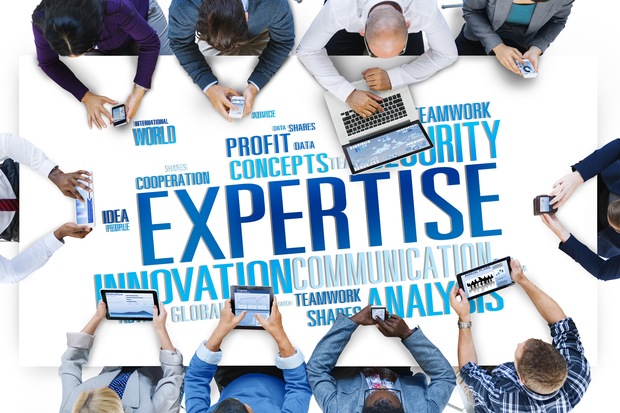Patients will soon be managing their chronic diseases as in-person support goes global and as collective wisdom produces clinical insights surpassing the knowledge of any single physician. Market predictions will be part of the future of health.
The wisdom of the crowd opens conversations around treatment options, symptoms, and options moving for improved patient care. Thinking and information processing (cognition), coordination (optimization of the utilization), and cooperation (how groups for networks of trust) applies to artificial intelligence, analytics, co-creation, and principles of the sharing economy. Social networks are creating new health information with disease association support groups (think crowd analytics). The collision of social media and healthcare create global crowds. These groups no longer need to be led by the smartest people. How clinical experience and insights are collected is changing.
Wisdom of the crowd
Are irrational mobs capable of wisdom that can be used to predict markets? In the age of social and global connected economies, can crowds make you healthier?
These principles are harnessed in the wisdom of crowds. The psychology of crowds is explained in James Surowiecki’s book, The Wisdom of Crowds. This captures his primary thesis on the wisdom of the crowd: the collective opinion of a group is superior to that of a single expert. Surowiecki, expanded on the 1841 work Memoirs of Extraordinary Popular Delusions, by Charles Mackay. Mackay is famous for saying. “Men, it has been well said, think in herds; it will be seen that they go mad in herds, while they only recover their senses slowly, and one by one.” Mackay didn’t see a lot of intelligence in crowds. Surowiecki took a differing perspective in response to Mackay’s work, saying that given the right circumstances, crowds or groups may have better information and make better decisions than even the best-informed individual.
Crowd-enabled health
PatientsLikeMe is a great example of where connecting to people like you, learning from others, can improve your personal health. PatiensLikeMe provides a more efficient method for patients to share real-world health experiences to improve patient health and by connecting other patients like you with organizations that focus on your conditions.NursesRecommendDoctors is changing the way patients find quality doctors. The premise is that nurses know which doctors have the best reputations, the best technical skills, and the best outcomes. Why? They see it every day. Sermo is the number one social network for doctors globally. This crowd has ballooned to over 600,000 verified and credentialed physicians for big meetings of the minds. Sermos operates across 80 countries including US, UK, Mexico, Germany, Sweden, Canada, and many others. Patients, nurses, and doctors are creating crowds for wisdom.
However, as it turns out, not all crowds are wise. Surowiecki, breaks down four criteria that separate the wise crowds from the irrational ones:
1. Diversity of opinion – each person should hold private information.
2. Independence – individual opinions aren’t determined by the opinions of those around them.
3. Decentralization – individuals specialize and can offer local knowledge.
4. Aggregation – mechanism exists for turning private judgments into collective decisions.
Today, we rush to schedule doctor’s appointments, only to wait to be seen. If we apply Surowiecki’s thesis on the wisdom of the crowd to healthcare we can surmise it as follows: there is no need to chase the expert.
Forecasting markets
Social media platforms have helped to increase the collective knowledge of the crowd. These media platforms include wikis, blogs, social networks, video-sharing, online forums, and video blogs like blab.im. From WebMD to WEGO Heath, social networks are integrating into the healthcare delivery system.
Augur is the future of forecasting. Augur is a prediction market platform that rewards the users for correctly predicting the future events (a decision market to capture collective wisdom). Augur prediction markets allow users to purchase and sell shares in the outcome of an event. The current market share of an event is an estimate of the probably of an event occurring. On Augur, the price of each share adds up to $1.00 USD, so if you buy a share at even odds it will cost, $0.50 USD, and if you predict correctly, you’ll earn $1.00 USD for that share. Augur combines the magic of prediction markets with the power of decentralized networks to create a stunningly accurate forecasting tool. This all happens on the blockchain. In a centralized prediction market, one person has to report back on the outcome of the event. This encourages mistakes or even corruption. Augur, is decentralized and uses blockchain with thousands of users reporting on outcomes using reputation. With Augur, anyone anywhere in the world can create a market by asking about anything. Augur was one of the first applications built on Ethereum, a decentralized computing platform featuring digital contracts and a turing-completeprogramming language.
What if there was a healthcare market prediction platform that used the wisdom of the crowd, social media, and analytics to make everyone healthier by becoming an expert on their health?
Tomorrow’s prediction of markets
The global healthcare analytics market is expected to reach $29.53 billion by 2019 from $7.04 billion in 2014, at a CAGR of 33.2 percent over the forecast period 2014-2019, according toMarketandMarkets.com. While descriptive and retrospective analytics offer historical information, it’s the predictive and prescriptive analytics that will move the economics of global health forward. The predictive analytics market is going to impact everyone in the healthcare value chain value including payers, private insurance companies, government agencies, employers and private exchanges, providers, hospitals, physician practices and IDNs, ambulatory settings, ACOs, HIEs, MCOs, and TPAs.
Growth will occur across five core prediction analytics markets.
1. Clinical analytics
2. Population Health Management (precision medicine and health)
3. Quality Improvements (clinical benchmarking, operational and administrative analytics)
4. Comparative (effectiveness Analytics, clinical decision support)
5. Payment Integrity (fraud, waste and abuse)
Big data evolutions, mHealth, and customer centricity all disrupt health insurance and the business of health. Likewise, market predictions will be part of the future of health.
Is it possible to predict factors that have greater insight and influence over patients’ behaviors? Can we use prediction markets to forecast infectious disease activity? Will prediction markets help align incentives creating long-term behavioral change supporting healthcare payment reform? As the frequency of chronic diseases rise and we move toward outcomes and value-based-care can we use prediction markets to forecast the demand for hospital services? It’s going to be an exciting road ahead. Prediction markets will be part of the future of healthcare.
Surowiecki believed that groups are remarkably intelligent, and are often smarter than the smartest people in them. Let’s use the collective wisdom of the crowd to produce clinical insights and make the world healthier. Monumental change starts with believers.










